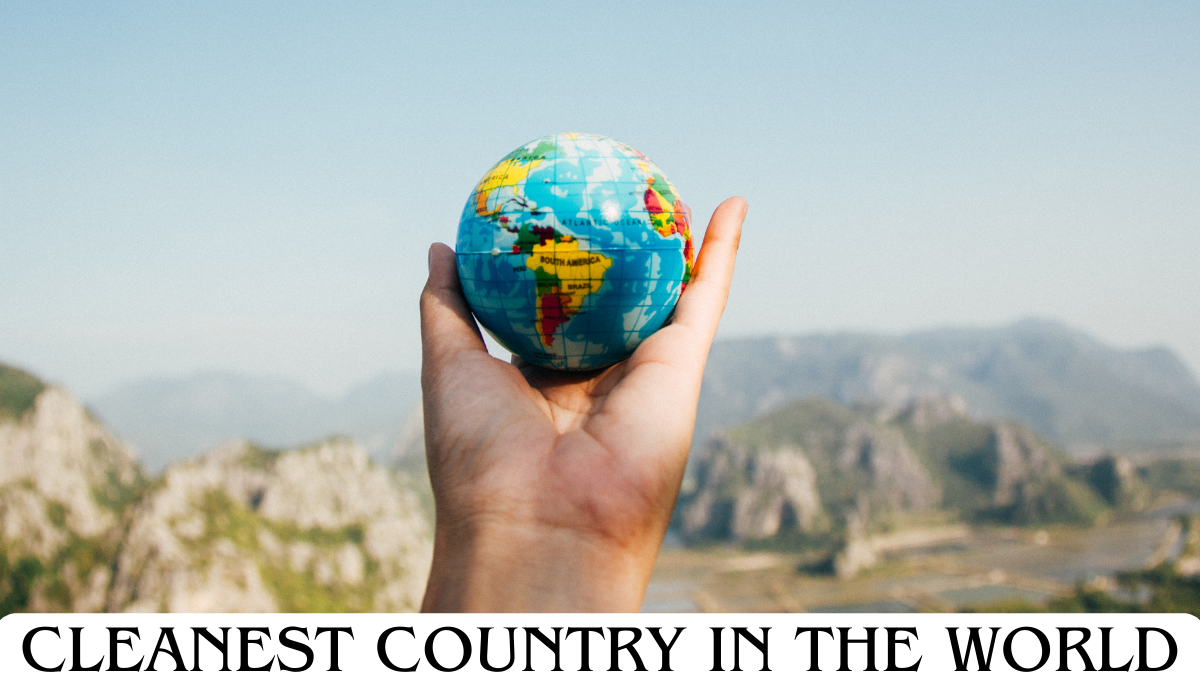Have you ever wondered, what is the cleanest country in the world? In an era where pollution and climate change dominate headlines, finding a nation that prioritizes cleanliness, sustainability, and environmental health is refreshing. Clean countries aren’t just beautiful—they represent better health, stronger environmental policies, and a higher quality of life.
In this article, you’ll discover:
- Which country tops the global cleanliness rankings
- How experts measure “cleanliness”
- What makes these countries stand out
- Key lessons we can all learn from them
Let’s dive in!
How Do We Define “Cleanest Country”?
Before naming the cleanest country, it’s essential to understand what makes a country clean. Global organizations like the Environmental Performance Index (EPI) measure cleanliness based on:
- Air Quality – Levels of air pollution and overall clean air index
- Water Sanitation – Access to safe drinking water and proper sewage systems
- Waste Management – Recycling, composting, and plastic waste reduction
- Biodiversity – Protection of forests, wildlife, and natural habitats
- Climate Policies – Commitment to renewable energy and carbon reduction
The EPI ranks countries by these factors, creating an overall environmental score.
So, What Is the Cleanest Country in the World?
According to the latest Environmental Performance Index, Switzerland often leads the rankings as the cleanest country in the world. Close competitors include Denmark, Finland, Sweden, and Norway—nations known for their strong environmental policies and love for nature.
Why Switzerland Is So Clean:
- Efficient Public Transport: Reduces car usage and lowers emissions
- Strict Environmental Laws: Tough penalties for littering and pollution
- High Recycling Rates: Citizens actively separate and recycle waste
- Green Energy: Significant reliance on hydropower and renewables
Other Countries That Rank High in Cleanliness
Aside from Switzerland, several countries consistently score high on global cleanliness indexes:
- Denmark – Famous for wind energy and bike-friendly cities
- Finland – Known for pure air quality and sustainable forestry
- Sweden – Innovator in waste-to-energy solutions
- Norway – Pioneer in electric vehicles and hydropower
These nations share one common trait: a cultural commitment to sustainability.
Why These Countries Stay Clean
Cleanliness isn’t achieved by government policy alone—it’s also a cultural mindset. Here’s what these countries do right:
- Public Awareness: People are educated about environmental impact from a young age
- Community Participation: Recycling and green living are part of daily life
- Government Support: Investments in renewable energy and green infrastructure
Benefits of Living in a Clean Country
Why does cleanliness matter? It’s more than just a pretty landscape—it impacts your health, economy, and overall happiness.
- Better Health: Less pollution means lower risk of respiratory diseases
- Tourism Growth: Clean, green countries attract eco-conscious travelers
- Economic Stability: Sustainability attracts global businesses and talent
How Can Other Countries Improve?
If you’re wondering how your country can move up in cleanliness rankings, here are some practical steps:
- Invest in Public Transport: Reduce dependency on private cars
- Promote Recycling Programs: Make it easy for people to recycle
- Ban Single-Use Plastics: Encourage reusable alternatives
- Plant More Trees: Green spaces improve air quality and biodiversity
Final Thoughts: Cleanliness Is a Choice
So, what is the cleanest country in the world? Right now, Switzerland wears the crown—but Scandinavian nations aren’t far behind. The truth is, any country can become cleaner with strong environmental policies, education, and community effort.

